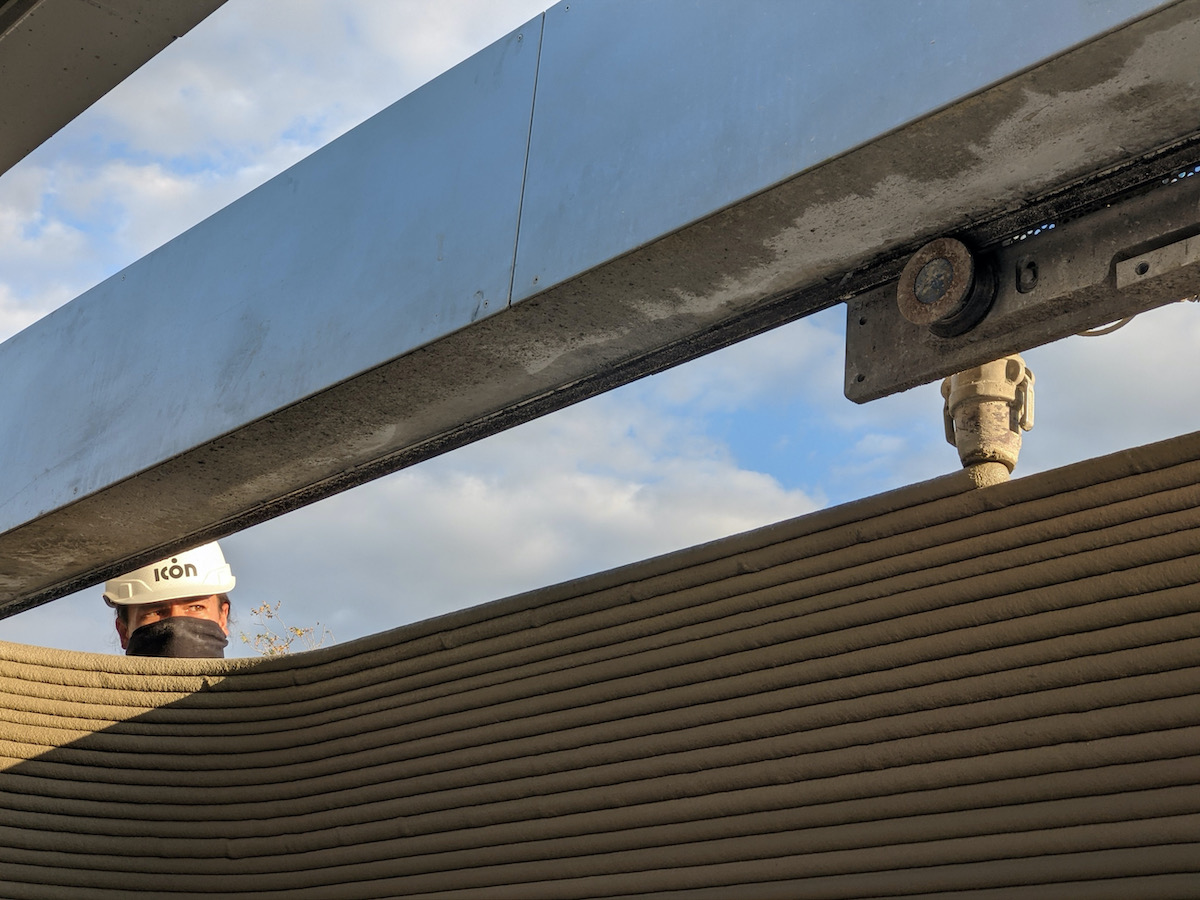We may earn revenue from the products available on this page and participate in affiliate programs. Learn More ›
House hunters have their work cut out for them. A limited number of available houses combined with soaring home values have thrown a wet blanket on the hopes of many would-be buyers. Enter 3D house printing: Though the technology is still in its infancy, it’s making a big splash in the building world. In 2021, we reported on the first 3D-printed home to hit the market in Riverhead, New York. Since then, 3D-printing construction companies have been ramping up production and one day, these affordable, cutting-edge homes might represent a significant share of the housing market.
What’s driving the housing shortage?
When the Covid-19 pandemic took hold in 2020, supply chains—including those in the building material industry—tightened, driving up prices for new-construction homes and reducing the number of new housing starts. Zillow data suggests that the meteoric rise of home values will tick down somewhat at the beginning of next year. As long as strong demand for houses continues to outpace inventory, though, market conditions will likely remain tight through 2023.
RELATED: This New Construction-Grade Building Material Recycles the World’s Worst Plastics
How can 3D printing help?
Thanks to supply chain problems builders are still struggling to source construction materials, which adds to the time it takes to build a traditional house. The 3D-printed home in Riverhead, N.Y., was built by SQ4D, a pioneer in the industry. Since then, SQ4D also has constructed the largest 3D-printed home.
It takes two workers just 6 to 8 hours to get the printer ready, and then the machine can print at an average speed of 400 to 700 inches per minute. While a traditional house averages at least 7 months to finish, a 3D-printed house can be ready to move in 2 or 3 months after construction begins.

Cost Comparison: Traditional vs. 3D-Printed Homes
There isn’t just a demand for houses in America—there’s a particular demand for affordable houses. Zillow estimates the value of the average home in America will be around $400,000 at the end of February 2023. Many types of construction materials have doubled (or even tripled) in cost in the past couple of years—for example, the steel mill price index was up 127 percent in 2021. The good news is that the price of concrete has not increased at the same rate as other materials.
Alquist, the construction company that built the first 3D-Printed Home for Habitat for Humanity, says that they were able to build the Virginia home for an estimated 15 percent per square foot less than it would have cost had it been stick built.

Where can buyers find 3D-printed houses?
The technology is new and still relatively rare, so 3D-printed homes are probably out of the question for most homebuyers. However, companies like ICON, a Texas-based builder launching a 100-home, 3D-printed housing community in Austin, Texas, are looking to change all that. The issue isn’t a lack of demand for the homes but rather a lack of the massive 3D-printing machines required to construct the houses. As the machinery becomes more widely available, the number of builders creating 3D-printed dwellings will likely increase.

The Pros and Cons of 3D-Printed Construction
We may well see the day soon on which homebuyers can easily schedule a walk-through of a 3D-printed home, or even have one built to their custom specifications. While opinions may differ, many will agree that the benefits of 3D-printed construction outweigh the concerns.
Pros
- It takes just 2 to 3 months to build a 3D-printed home.
- Buyers can save 15 percent or more over traditional construction costs.
- Eco-friendly, 3D-printed homes reduce the number of trees that must be harvested for homebuilding.
Cons
- Reduced demand for jobs in the homebuilding industry

What’s the long-term outlook for 3D-Printed houses?
It’s been more than a year since the first 3D-printed house hit the market and since then, more construction companies have invested in the machinery that makes computer-automated building possible. Concrete is structurally sound, durable, and less expensive than other construction materials.
While it’s likely to be years before 3D-printed homes are the rule rather than the exception, the current trend points toward a more sustainable, affordable way of building. In time, 3D-printed homes could very well be a solution to housing shortages.


